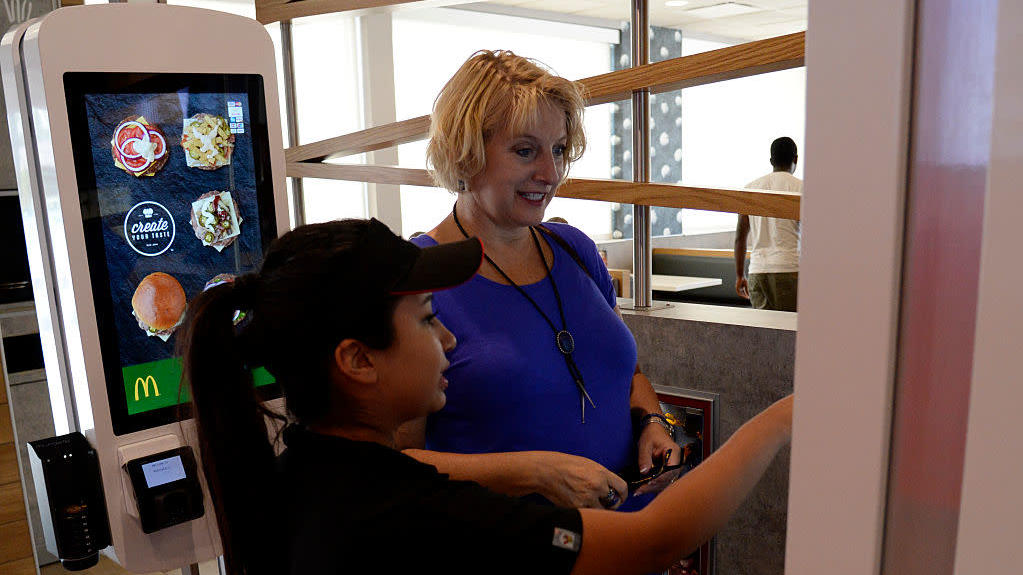McDonald's Discovers Cashless Kiosks Don't Make Life Easier For Everyone
The point of fast food is to deliver salty, carby burgers and fries to hungry people as soon as possible. So why, McDonald's reasoned, should it not provide kiosks in all its restaurants so customers and workers don't have to waste time talking to each other and repeating things over and over? Efficiency above all!
Fair enough, but in its mad rush toward the technological future, McDonald's neglected one important point: Lots of people out there don't have credit cards (6.5% of U.S. households, according to Bloomberg, which translates to 8.4 million). In theory, it's possible to pay for a kiosk-ordered meal in cash, but that requires a customer to go up to the counter with their bills and coins and then maybe wait in line behind people who have decided to order in person, which saves absolutely no time at all.
John Gordon, a principle at the Pacific Management Consulting Group, estimates that 30% of fast food customers and 40%-60% worldwide pay in cash, and told Bloomberg that the cashless kiosks were a mistake. "Lower income people just don't have access to credit cards; they're paying with a lot of things in cash," he said. "Why should they not have the same access to personalization, or to get in and out quickly if there's a line?"
Unfortunately, franchise owners have already paid as much as $750,000 per restaurant to install the kiosks.
There's an argument to be made that card-only stores can cut down on the possibility of robbery since there's no cash on the premises to steal, but plenty of other people agree with Gordon that it's discriminatory to favor customers who can pay with plastic. San Francisco and Philadelphia have already enacted bans on cashless establishments, and other municipalities might follow suit.
